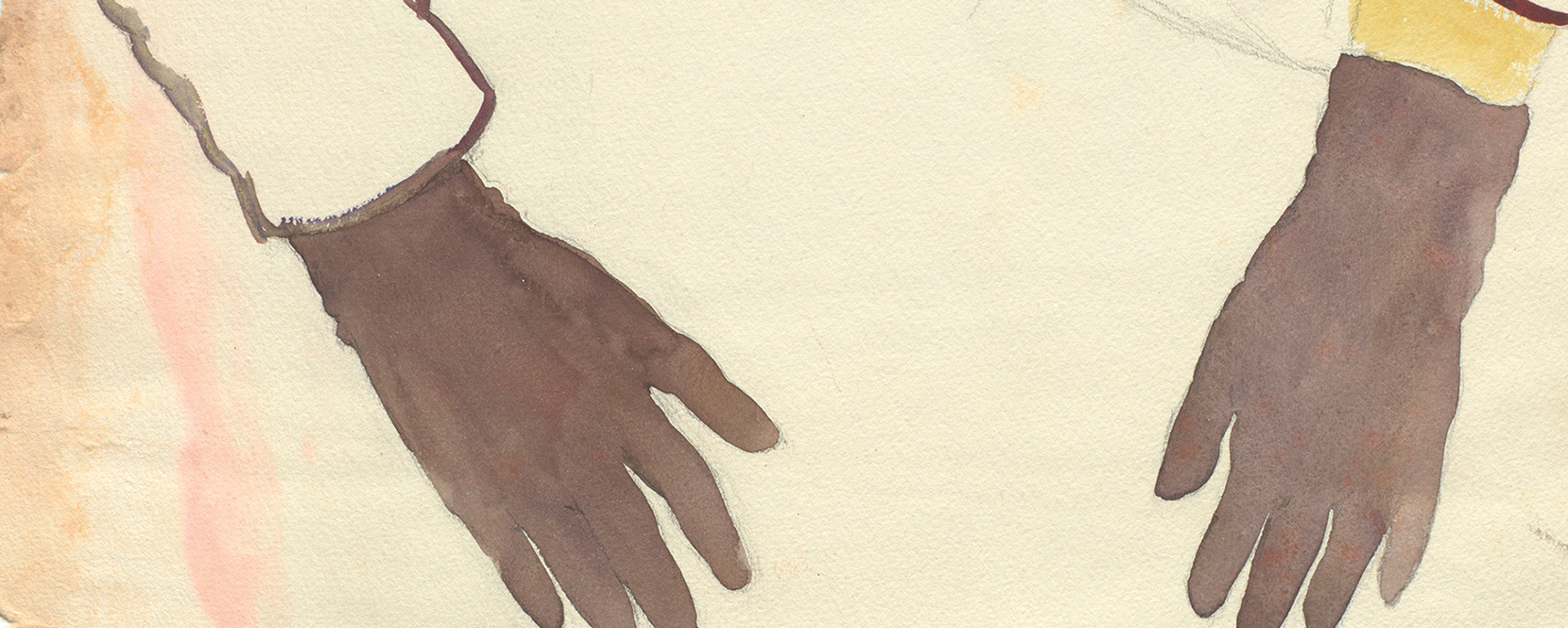Um 1900 wurden in den meisten der 25 kantonalen psychiatrischen Anstalten in der Schweiz ab und zu Bilder, Zeichnungen oder anderes künstlerisches Schaffen von Patientinnen und Patienten aufbewahrt. Die Werke sind dichte und sehr verschiedenartige Statements auf ästhetischer Ebene dazu, wie Normalität um 1900 verhandelt wurde.
In manchen Anstalten wurde sogar eine Sammlung angelegt und in einem kleinen Museum gezeigt. Psychiater traten forschend an die Werke heran. Sie fragten, ob Begabung gesund oder ob Genialität ein Zeichen von Geisteskrankheit sei. Sie betteten die Werke in diagnostische, wahrnehmungs- und kunstpsychologische Fragestellungen ein und deuteten sie in der Therapie. Sie suchten nach dem Ursprung von künstlerischem Ausdruck und verglichen die Werke mit moderner, aussereuropäischer oder mittelalterlicher Kunst. Die Psychiater Walter Morgenthaler oder Hans Steck waren von den Werken ihrer Patienten Adolf Wölfli oder Aloyse Corbaz tief beeindruckt und stellten sie der Kunst der Avantgarde als ebenbürtig zur Seite. Die aktuelle Forschung untersucht die diskursiven Einbettungen und die gesellschaftliche Dynamik, die diesen oft sehr komplexen Laienwerken innewohnt. Künstlerisches Schaffen war eine mögliche Strategie des Überlebens in der schwierigen Situation des Ausschlusses vom öffentlichen Leben.
Das Forschungsvorhaben „Bewahren besonderer Kulturgüter I und II“ (Projekt I: 2006-2008, Projekt II: 2010-2014) wurde vom Schweizerischen Nationalfonds unterstützt und ist an der Zürcher Hochschule der Künste, Institute for Cultural Studies (Prof. Sigrid Schade) angesiedelt. Projektleitung Dr. Katrin Luchsinger, wissenschaftliche Mitarbeiterinnen lic. Phil. Iris Blum, Jacqueline Fahrni (Projekte I und II), Florence Choquard Dr. phil. (Projekt II), Isabelle Dessort-Baur, Anita Rufer (Projekt I).
Publikationen in Zusammenhang mit dem Projekt
Many psychiatrists across Europe collected the artwork made by their patients. The works were used to explore questions surrounding mental diseases or were compared to the works of the avant-garde. These works are astoundingly diverse and complex. It is highly rewarding to collect them as documents from the lives of persons severed from society, and to bring these works into the public domain. They are condensed statements on what was deemed to be normal around 1900 and how normality was negotiated at the time.
From 2006 to 2014, Zurich University of the Arts (ZHdK), Institute for Cultural Studies (Prof. Sigrid Schade), hosted a research project entitled “Preserving Special Cultural Treasures.” Funded by the Swiss National Science Foundation, a team of researchers surveyed the artworks created by the inmates of Swiss psychiatric hospitals in the period between 1850 and 1930. Comprising over 5,000 works, the resulting image database is now publicly accessible at the Swiss Institute for Art Research. Historical collections of such works were found in 19 of the 25 mental institutions in Switzerland. Some established small museums to exhibit the works, because at the turn of the century such art and the issues associated with it attracted great interest among psychiatrists and the wider public: questions concerning mental illness, perception, and the imagination were as common as comparisons with the “primitive” and the avant-garde. Artworks produced by patients were collected or assembled for exhibition across Europe. The surviving case files and patient records, now often housed in state archives, contain drawings or photographs of objects. Long neglected, these complex documents from the lives of individuals cut off from society are very much worth collecting and preparing for display.
Projectmanagment: Prof. Dr. Katrin Luchsinger, Research associates: Iris Blum, lic. phil., Jacqueline Fahrni (Projekte I und II), Florence Choquard Dr. phil. (Projekt II), Isabelle Dessort-Baur, Anita Rufer (Projekt I). Database: Swiss Institute for Art Research (Schweizerisches Institut für Kunstwissenschaft, SIK-ISEA), Zollikerstr. 32, Zurich, Monday – Friday, 13 30-17 30. You can find the inventories as a pdf also on this website (look under “Sammlungen”).
Both the projects „Bewahren besonderer Kulturgüter“ I and II are sponsored by the Schweizerischen Nationalfonds/DORE; 2007 and enjoy the patronage of the Swiss UNESCO Commission. The research project “Bewahren besonderer Kulturgüter I” was awarded the sponsor’s prize of the Schweizerische Gesellschaft für Kulturgüterschutz SGKGS in 2008. Leading house is the ZHdK, department culture analysis and mediation, Institute for Cultural Studies in the Arts. The transfer of the picture database to the Schweizerische Institut für Kunstwissenschaft SIK-ISEA was supported by the Ernst Göhner-Stiftung and the SIK-ISEA.
